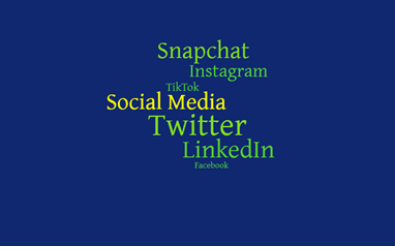One thing is for certain about 2020: we spent a lot of time on social media. According to Statista, the number of social media users hit 3.6 billion in 2020 and it continues to grow. Given the events of the past year, there are some clear trends and shifts emerging that will impact how nonprofits or socially responsible companies will conduct their social media and marketing activities in 2021.
Video Is King
According to Cisco, videos are expected to make up 82% of all online traffic this year. Nonprofits should plan on using videos to tap into the emotional and personal interests of their followers. Sharing a behind-the-scenes video or showcasing the impact of donations will connect audiences with the organization’s mission.
There are many options for making and sharing innovative content. TikTok was downloaded more than Instagram in 2020. Nonprofits that have a large following of donors that are Millennials and Gen Z can build on those demographics by using TikTok as a great tool for fundraising awareness building. Instagram Reels is a new form of video content delivered in 15–30 seconds to create quick, attention-grabbing moments in a creative and entertaining way. Live streaming is also a very powerful tool to use on social media.
More than 150 million people watch live stream videos every month. Most social media platforms have live streaming capabilities such as Facebook Live, YouTube Live, Instagram Live, LinkedIn Live, etc. Live streaming events and webinars and connecting social channels with Zoom’s live streaming services will lead to greater engagement and brand awareness.
Now You See It, Now You Don’t
Disappearing content, or ephemeral content, are pictures and videos called “stories” that are posted on social media, only to disappear within 24 hours. What started on Snapchat has been adopted by platforms like Instagram, Facebook, Twitter, and LinkedIn. The use of stories helps to maintain and increase engagement with followers and consumers. The feature allows organizations and brands to communicate without interrupting their main feed or timeline. Stories allow organizations to engage with followers in a completely different way by giving their audience a window into the organization’s daily operations. It’s a way to show the organization’s human side and what is happening at that moment in time. Nonprofits can create engaging content by sharing posts, tweets, polls, questions, and donation stickers. Collaborate with partners, influencers, and public figures through Q&A interviews about the organization to broaden the social media profile’s reach and visibility.
To save a particular story on Instagram create a highlight. Highlights are curated collections of Instagram Stories that followers can tap into and watch any time they like. The highlights are live front-and-center on Instagram profiles (below the bio). They are great for helping new followers discover what a company is all about.
How People Give and Volunteer is Changing
Despite the economic crisis, CNBC reports COVID-19 increased charitable giving in the United States. Social media campaigns bridged the gap created by the cancellation of in person events during the pandemic. Charitable giving days like #GivingTuesday have continued to increase in popularity. Communities, nonprofits, and individuals benefit from having organized days to generate excitement around the work they are passionate about.
To prepare for giving campaigns, Teak recommends planning the social media strategy early and sending out communications about the campaign with plenty of lead time. Make sure storytelling is central to the giving campaign and that the content showcases why followers should recurrently donate to the nonprofit’s cause.
While COVID-19 has changed in-person volunteering opportunities, it didn’t deter people from volunteering virtually. Just like virtual events, virtual volunteerism is going to be a permanent fixture in the nonprofit industry. It opens the door to more opportunities for people with geographic or physical limitations to volunteer and provides a more engaging platform with Millennials and Gen Z. Virtual volunteers can serve as mentors, doing language and translation services, and taking on remote administrative tasks such as research, email marketing, social media management, graphic design, and fundraising calls.
The world around us is constantly changing. It is best to continue to research trends, observe the behaviors and interests of followers by using social listening best practices. Leverage trending topics and then “newsjack” to make content relevant and compelling. Companies and nonprofits that embrace change are growing their audiences even during the most challenging of times.


